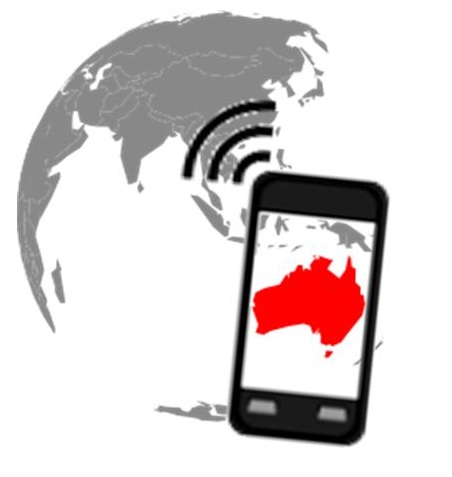The AIMIA has now released its tenth annual index which has provided considerable insight into tech trends.
The Tenth Annual Australian Mobile Phone Lifestyle Index has now been released by the AIMIA, which has allowed the industry to gain a considerable amount of insight with regards to the preferences and behaviors of consumers in Australia with regards to mobile technology.
This year, they discovered that between smartphone and televisions, Australians prefer their cell phones.
In fact, among the respondents to this year’s study, 61 percent said that they would choose their mobile technology – specifically, their smartphone – over a television. That said, 70 percent still said that they preferred their cars. Moreover, when the respondents to this survey were offered the choice from among various types of tech, about 50 percent said that their preference was their smartphone, 34 percent still preferred their laptop or desktop, and 16 percent wanted their tablets.
The survey also looked into a range of different overall behaviors with respect to the use of mobile technology.
 For example, about 30 percent of the respondents to the survey in Australia said that they brought their mobile devices to bed, where they would use them, and that they also watched television there. Another 39 percent said that they always used their smartphones while they were traveling on public transportation such as buses.
For example, about 30 percent of the respondents to the survey in Australia said that they brought their mobile devices to bed, where they would use them, and that they also watched television there. Another 39 percent said that they always used their smartphones while they were traveling on public transportation such as buses.
A surprising 34 percent of respondents had only a mobile phone as their telephone service and did not subscribe to a landline telephone.
When it came to shopping behaviors, the laptop and desktop continued to reign supreme, as 93 percent of PC owners had made a purchase over their computers. Comparatively, among tablet owners, 73 percent had made a purchase, and among smartphone owners, 58 percent had made a purchase over their devices.
Slightly more than one in three respondents stated that they did not wish to receive personalized ads on their mobile technology or computers. This is interesting as it is in direct opposition to the current trend that is growing with respect to the personalization of mobile marketing and advertising through the use of various kinds of messaging.
These consumers are also concerned about spam when it comes to the smartphone based marketing they receive.
Research conducted by On Device on behalf of MobPartner has now revealed some interesting insight with regards to the way that mobile ads are being used to reach travelers and what those consumers feel about this advertising.
The study was conducted earlier this year with the participation of 1,000 device using travelers.
The research looked into the way that travelers engaged in the planning and research of their trips on their laptops, smartphones, and tablets, particularly when it came to the receipt of online and mobile ads. What they determined was that nearly two out of every five respondents to the survey stated that they were reluctant to click on mobile marketing advertisements as they have concern that it could potentially be spam.
Among the respondents, 33 percent felt that the mobile ads that they received were not relevant to them.
 In fact, the vast majority of the respondents to this research were not among those that felt that mobile marketing was effective. Only 17 percent claimed that they felt that the mobile advertising that they received was effective. Another 52 percent were uncertain as to whether or not they felt that it was effective.
In fact, the vast majority of the respondents to this research were not among those that felt that mobile marketing was effective. Only 17 percent claimed that they felt that the mobile advertising that they received was effective. Another 52 percent were uncertain as to whether or not they felt that it was effective.
Among the most important factors in the creation of mobile advertising as a channel that travelers will take seriously is in the familiarity and comfort components with the brands themselves. The study determined that one in three smartphone users would be willing to click on a digital ad if they believe that it was created by a brand that they trust. Moreover one in four of those respondents said that they had then made a purchase from that brand after having clicked their ad.
When it came to mobile ads that used video instead of just static display content, the advertisements that were viewed over smartphones and tablets the most frequently were those that included video (33 percnet0. However, when travel brands featured apps or mobile games, they generated a recall value of 32 percent. Regardless, the largest common opinion that seems to continue in the minds of travelers with respect to mobile marketing as a whole appeared to be doubt.
 For example, about 30 percent of the respondents to the survey in Australia said that they brought their mobile devices to bed, where they would use them, and that they also watched television there. Another 39 percent said that they always used their smartphones while they were traveling on public transportation such as buses.
For example, about 30 percent of the respondents to the survey in Australia said that they brought their mobile devices to bed, where they would use them, and that they also watched television there. Another 39 percent said that they always used their smartphones while they were traveling on public transportation such as buses.
 In fact, the vast majority of the respondents to this research were not among those that felt that mobile marketing was effective. Only 17 percent claimed that they felt that the mobile advertising that they received was effective. Another 52 percent were uncertain as to whether or not they felt that it was effective.
In fact, the vast majority of the respondents to this research were not among those that felt that mobile marketing was effective. Only 17 percent claimed that they felt that the mobile advertising that they received was effective. Another 52 percent were uncertain as to whether or not they felt that it was effective.